Cómo el diseño sensorial puede beneficiar las salas VIP de las aerolíneas
El enfoque sensorial del diseño de interiores combina materiales, colores, fragancias y sonidos para visualizar cada interior y crear experiencias inmersivas y multisensoriales en todo momento. La verdadera belleza del diseño sensorial es que es inclusivo, socialmente sostenible y, al abordar múltiples sentidos juntos, apoya la diversidad de la condición humana.
‘)
}
// –>
When Franky Rousell launched the Jolie interior commercial interior design studio in 2017, she was adamant that everything she incorporated into Jolie’s design schemes should be grounded in science. To achieve this, she met with a series of neuroscientists who specialise in the different senses in order to bolster her knowledge around colour psychology, gastrophysics and gastronomy, aromatherapy and psychoacoustics.
“I was keen to understand what it is that makes you as a human being, as a user of the space, decide whether you like it or not, whether you think it’s successful, and how what’s going on around you helps form that decision,” says Rousell. “I quickly came to the conclusion that it was multi-sensory – and usually subliminal – and realised that this was where the true magic of interior design really took place.”
“Talking about emotions may seem frivolous,” she continues. “Yet understanding your audience and how you want them to feel and behave as they enter, transition through and leave a space soon leads to concrete choices that influence behaviours where simple function and form don’t. By discussing this in business terms and showing the client how this plays out, developers and business owners see first-hand the genuine scientific and financial benefits of sensory design.”
Jolie’s Franky Rousell believes that neuroscience can greatly enhance people’s appreciation of a space and everything happening within that space, and this engagement can raise customer spend
A sense of sight: applying colour
Colour is intrinsically linked to the psyche, and plays a huge role in helping to define a person’s mood. Different hues and shades can make people feel creative, reduce anxiety, calm or motivate them. When used correctly and striking an optimal balance, colour has an incredible potential to influence how an end-user feels and behaves in a space.
For example, when designing the Sports Hall at Manchester’s Deansgate Square development, Jolie drew upon the Jolie’s research of the psychological benefits of colour for sporting activities, choosing colours and lighting that immerse people in a space that feels energising, competitive, but also fun and fresh.
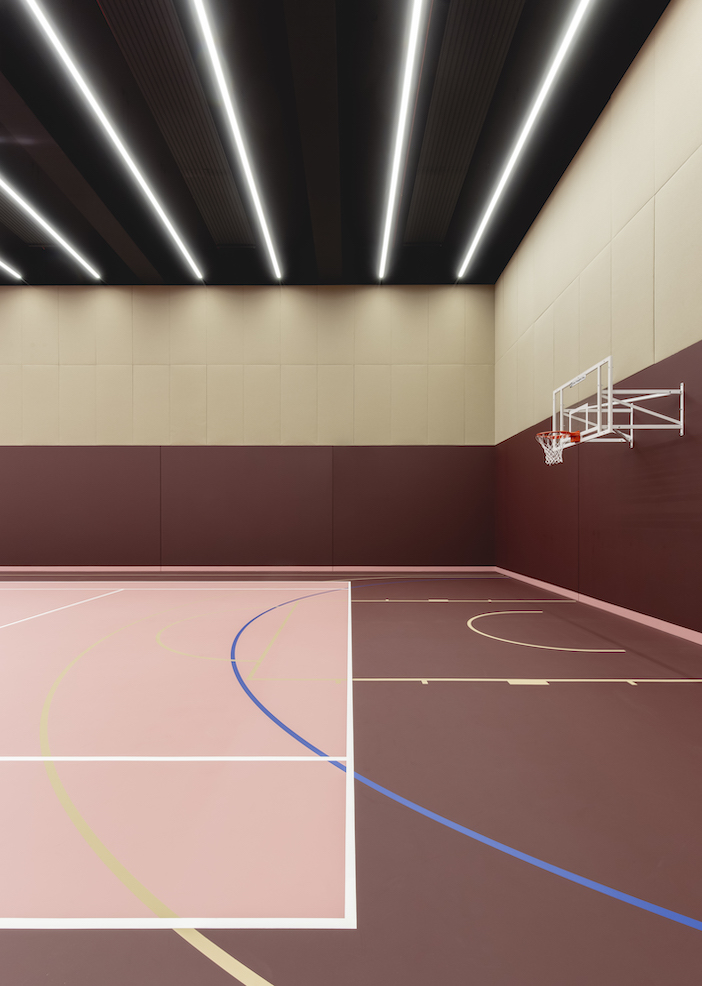
A striking yet soothing palette of colours in the Deansgate sports hall
Deep red was applied as a powerful and competitive colour, invoking energy and strength, and combined with a bright pink contrast to encourage playful behaviour and provide a sense of comfort. These two dominant colours were balanced with natural hues so as to reduce the fear reaction typically associated with red, including the bold black ceiling and the soft beige used in the acoustic panelling. In the gym, Jolie combined warm oranges and yellows with light pinks; all colours that psychologically spark confidence, energy, productivity and happiness, paired with sustainable wood finishes and dark greys to ground and balance.
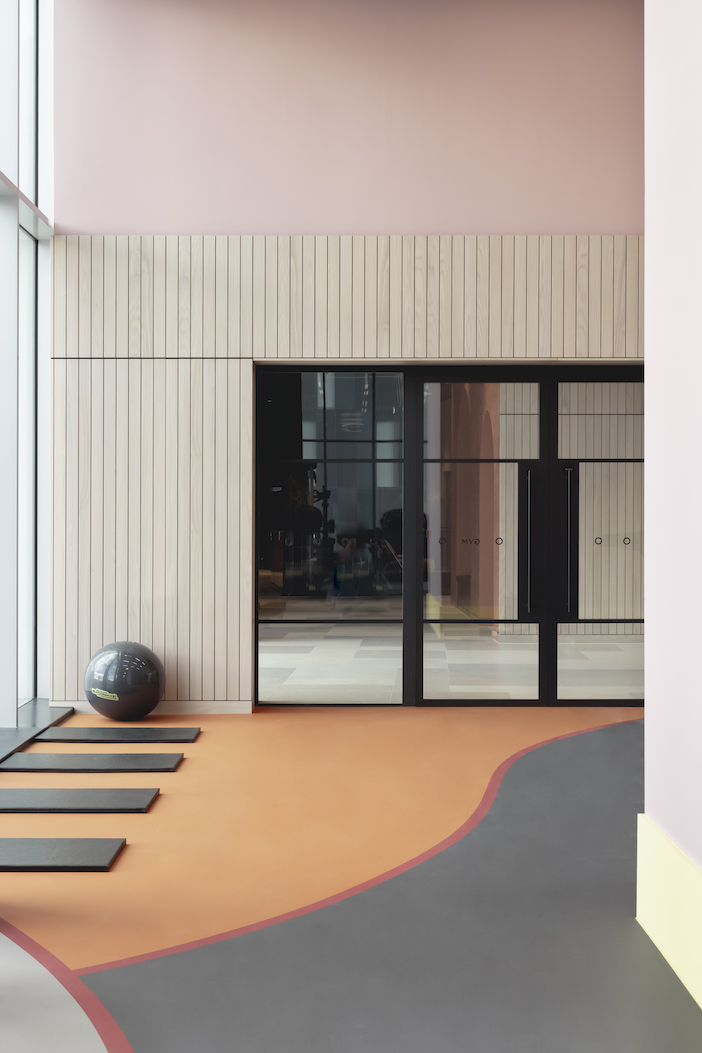
The colours in the Deansgate gym were selected to evoke feelings of confidence, energy, productivity and happiness
A splash of fragrance
Smell is a sense often overlooked in interior design, but as the strongest human sense it forms a crucial element of Jolie’s experiential approach to spacemaking. By activating the olfactory system through scent, a sense of nostalgia, excitement or comfort can be sparked, helping to shape the atmosphere to reflect the intended mood for the space.
At Deansgate Square, the Jolie team applied their research into the cultural origins of natural scent to tap into these vital olfactory senses and provide both spiritual and healing benefits. Peppermint was used in the sports hall to boost energy and alleviate nervous tension and stress, while in the swimming pool area cedar wood oil was used to reduce anxiety, paired with bergamot to uplift, and black tea to add a cultured subtle finish. Crushed lime and mint was then used in the gym to create a fresh, healthy and productive atmosphere.
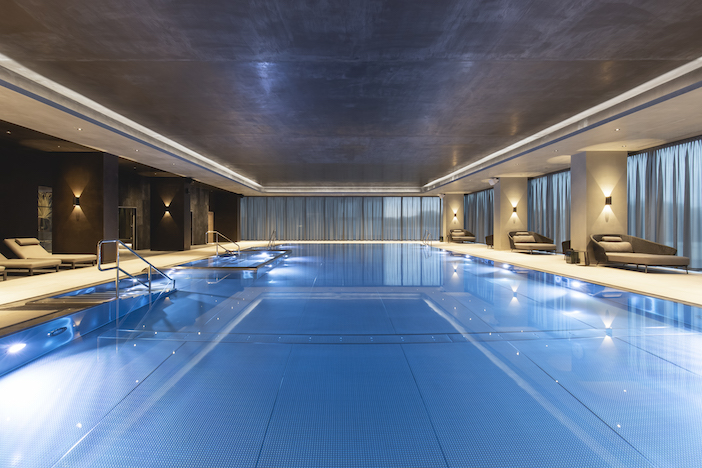
The pool area at Manchester’s Deansgate Square complex has a scent of cedar wood oil to reduce anxiety
The sense of touch
The sense of touch can evoke powerful emotional connections, and as our largest organ, the skin acts as the interface between us and our surroundings. In the neuroscience of touch, humans experience different sensations – and emotions – depending upon which part of the body is making contact.
“When we touch materials with our fingertips, our reaction is usually purely informational; we use our fingertips to understand what is in front of us, usually in conjunction with the sense of sight,” Rousell explains. “When you begin to experience touch via other parts of the body, especially where you have hair follicles, it becomes a more emotive sense of touch.”
“Part of our priority as sensory-led interior designers is to strike the ideal balance between a material’s aesthetics, emotional drivers and sustainability credentials,” adds Rousell, “as it’s not enough for a texture to simply look and feel good.”
For example, a piece of cocooning furniture – like a vegan leather club chair, as used at the Victoria Riverside residential complex in Manchester, which comes up and around the shoulders – can provide a sense of comfort and reassurance, even in a corporate environment.
At Victoria House, another residential complex in Manchester, in the Ancoats area, Jolie opted for wooden flooring in the communal yoga studio. “We know that the sensation of placing your bare feet upon natural wood grain is incredibly grounding and nurturing,” explains Rousell, “and helps to support the overall practice of yoga.”
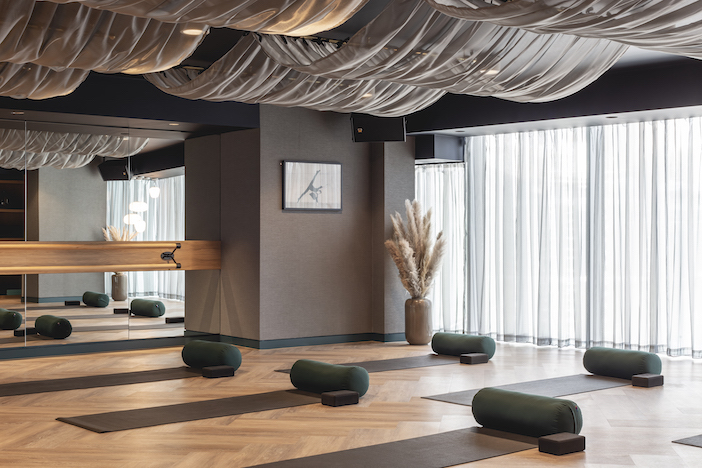
Jolie’s relaxing and luxurious yoga studio materials and colour scheme
Sound in sensory design
Sounds can make or break your enjoyment of a space, making it a crucial part of a sensory design ethos. “As humans we have an innate ‘fight or flight instinct’, and even while we’re sleeping, our ears are still ‘switched on’,” says Rousell. “We know that there are certain cues that can trigger anxiety through sound, so we naturally want to induce the opposite in everything we design. We want people to come into our spaces and feel energised, excited or even relaxed and reassured.”
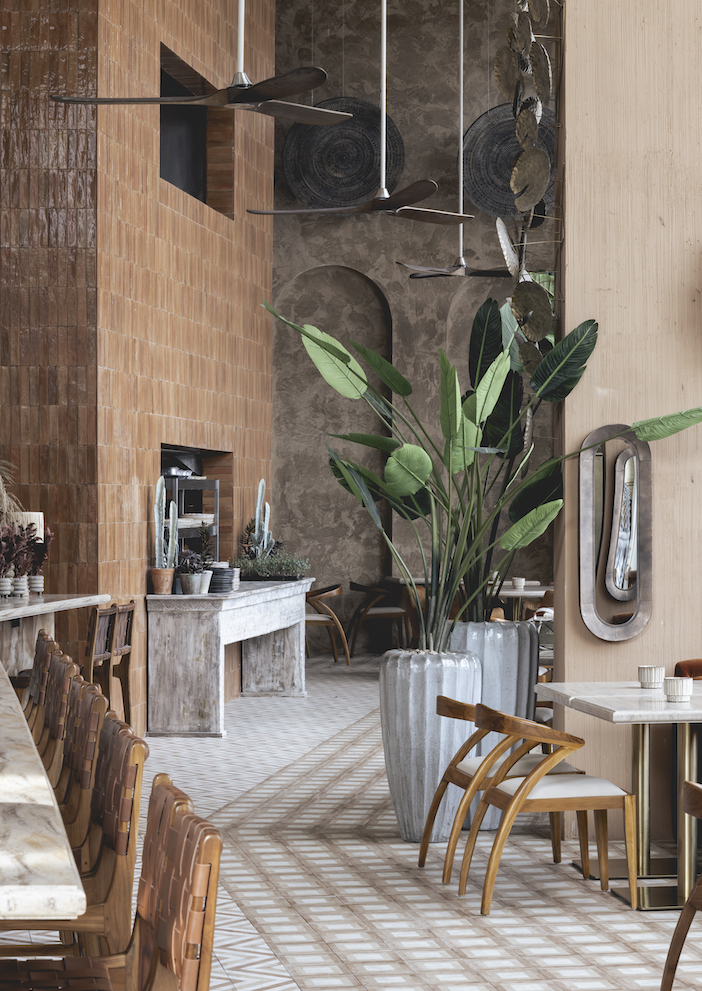
Sound travel was considered when designing the high spaces of the Kitten restaurant in Manchester
Jolie begins by establishing how its clients want users to feel and behave, then design a soundscape to elicit those emotions and actions. For example, Kitten, a Japanese restaurant in Deansgate Square, Manchester, has triple-height ceilings that amplify sound within the space, so Jolie used lots of textured materiality and soft furnishings to dampen noise levels, and worked with the client to curate an ambient background playlist for times when the DJ wasn’t present.
Airports can be stressful environments, and paying attention to sound factors can help the lounge areas serve as an oasis of peace.
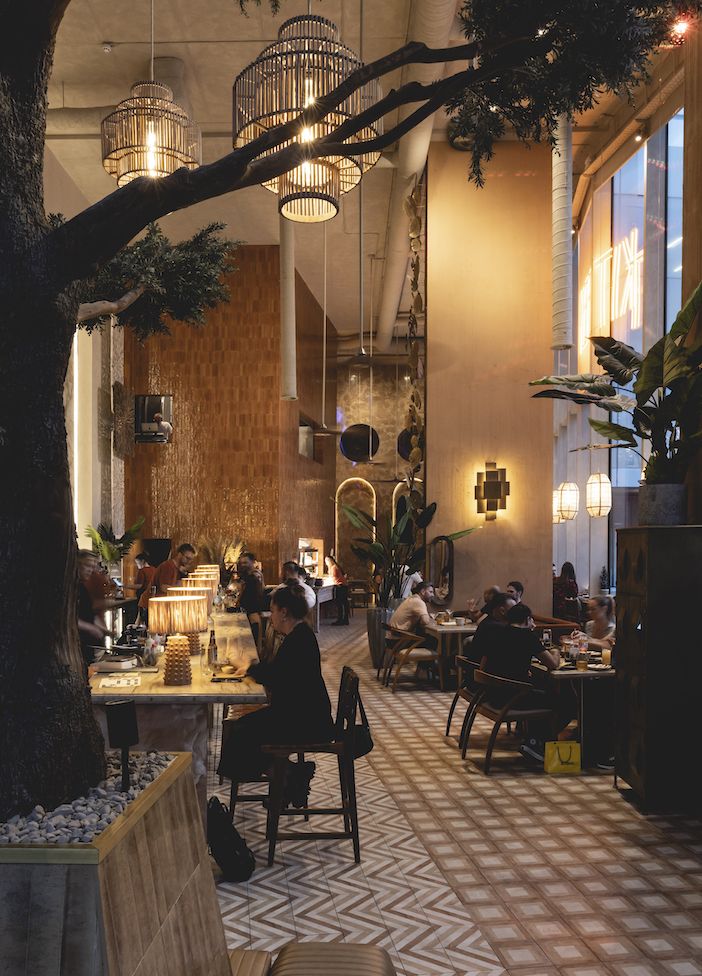
A soothing and upscale evening vibe at Kitten in Manchester
Taste-ful design
Closely connected to smell is our sense of taste, which is especially relevant when designing restaurants, cafes, hotels and bars – and airline lounges. As the subtlest sense, designers should draw out the potential of taste to enhance users’ experience of a space by delving into the nutritional offerings of a venue to create the perfect opportunity for visitors to relish the different flavours on offer.
At Mule in Ancoats, Manchester, a contemporary cafe by day and a ramen and cocktail bar by night, Jolie sought to enhance the contemporary fusion brunch and dinner menus through the use of a considered day-to-night lighting scheme, soft and gentle architectural curves, sandalwood aromas and colourful glassware. By combining light blush hues and terracotta shades the small interior space sparks relaxation, decompression and excitement to triple up as a favourite spot for a brunch date, 3pm cake and late-night cocktails.
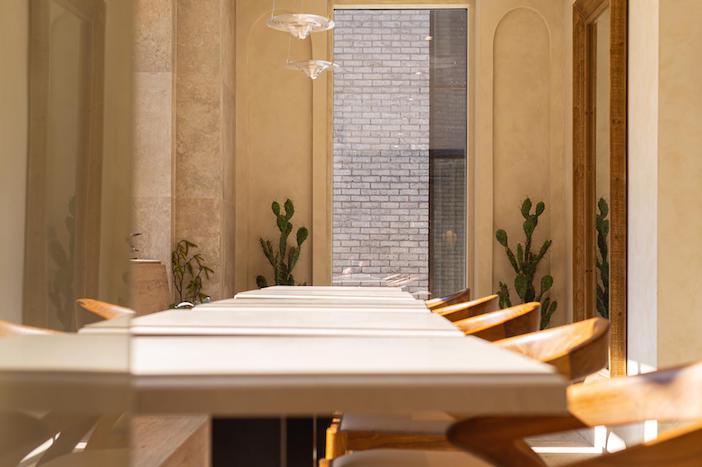
Light blush hues and terracotta shades create a great feel at Mule in Manchester, whatever time of day or night
Social sustainability
Once designers understand how they want users to feel, they should look at the next layer: social sustainability. “For us, this is about fostering positive attitudes, encouraging sustainable behaviours and building up communities,” says Rousell. “Naturally, when we create spaces that bind people together and create a sense of community, people feel uplifted, empowered and comfortable.”
“Now, more than ever, we want to move away from isolated living into communal ways of working, shopping, eating and socialising that will boost confidence and make people feel amazing. In this way, it’s no exaggeration to say that sensory-led interior design creates shifts in society. By bringing people together, we reduce waste, avoid duplication and establish a more circular society. When people are sharing amenities and spaces, a sustainable agenda aligns logically with sustainable design.”
There should be a natural alignment between function and feeling, digging deeper into what makes people feel the way they do and ensuring harmonious, balanced environments that simply feel right. By taking a research-driven, neurological approach, spaces can be designed that encourage users to feel or act in specific ways. Design choices that can make end users feel excited, curious or happy, encourage them to stay longer, converse more deeply, spend more money, and even heighten their enjoyment of different dishes.
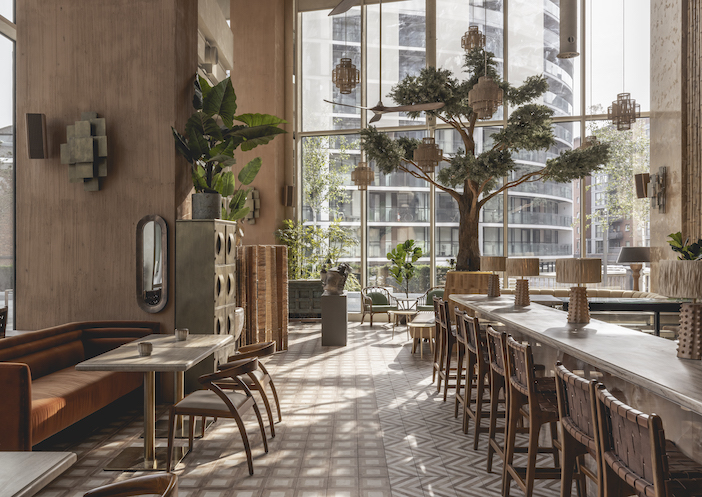
Natural hues and materials at Kitten in Manchester
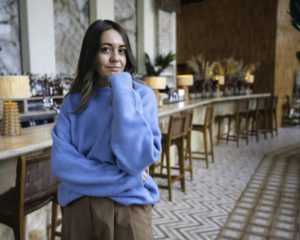
Jolie’s founder and CEO, Franky Rousell
The Jolie interior commercial interior design studio creates community spaces that put ‘sensory-balanced’ design at their heart. The studio collaborates with neuroscientists in each sensory field to carefully source and combine materials and fragrances to craft each environment from the inside out, creating socially sustainable and adaptable spaces that encourage interaction and connection.
“We incorporate scientific sensory research into our interiors to emotionally drive people in their environment – and I love that we change lives through design,” says Jolie’s founder and CEO, Franky Rousell.

“Alborotador. Amante de la cerveza. Total aficionado al alcohol. Sutilmente encantador adicto a los zombis. Ninja de twitter de toda la vida”.

